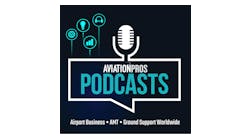Simple, Effective Crosshole Deburring of Complex Aerospace Parts
In automated machining for aerospace, removal of burrs and sharp edges in cross-drilled holes and other difficult-to-access areas such as undercuts, grooves, slots, or internal holes can cost time and money. One particular challenge is deburring the intersection of cross-drilled holes frequently found in engine components.
In many applications, cross-drilled holes act as conduits for fluids, lubricants and gases. Failing to remove burrs can cause blockage of these critical passages or create turbulence in the flow. Burrs can also lead to part misalignments, affect dimensional tolerances, and limit the overall efficiency of machined components.
Although there are many techniques for deburring internal passages at cross-holes, the majority require sending out parts or investing in equipment to complete the work in-house that can cost tens of thousands of dollars.
These options, which include thermal, abrasive flow, electrochemical, and high-pressure water, effectively remove excess material but they also build time into the manufacturing process and add to costs.
The more ideal option, however, for many aerospace operations is to integrate deburring into the automated process with a simple, effective crosshole deburring tool called the Flex-Hone from Brush Research Manufacturing (BRM). By doing so, operators can speed up the manufacturing process and ensure uniform quality for precision parts.
Flexible hones are ideal because it is a cost-effective solution to smooth edges and produce a blended radius for crosshole deburring.
For engineers in aerospace manufacturing, the ball-style hone is a highly specialized abrasive tool that is instantly recognizable by its unique appearance.
Characterized by the small, abrasive globules that are permanently mounted to flexible filaments, the product is a flexible, low cost tool utilized for sophisticated surfacing, deburring and edge-blending.
The flexible hone’s abrasive globules each have independent suspension that is self-centering, self-aligning to the bore, and self-compensating for wear, all of which facilitate close-tolerance finishing work.
The tool can be used in CNC machines and also with a cordless drill.
For more information, contact Brush Research Manufacturing, Brush Research Mfg. Co., Inc., 4642 Floral Drive, Los Angeles, CA 90022; Phone: (323) 261-2193; Fax: (323) 268-6587; email: [email protected] or visit the web site: www.brushresearch.com





